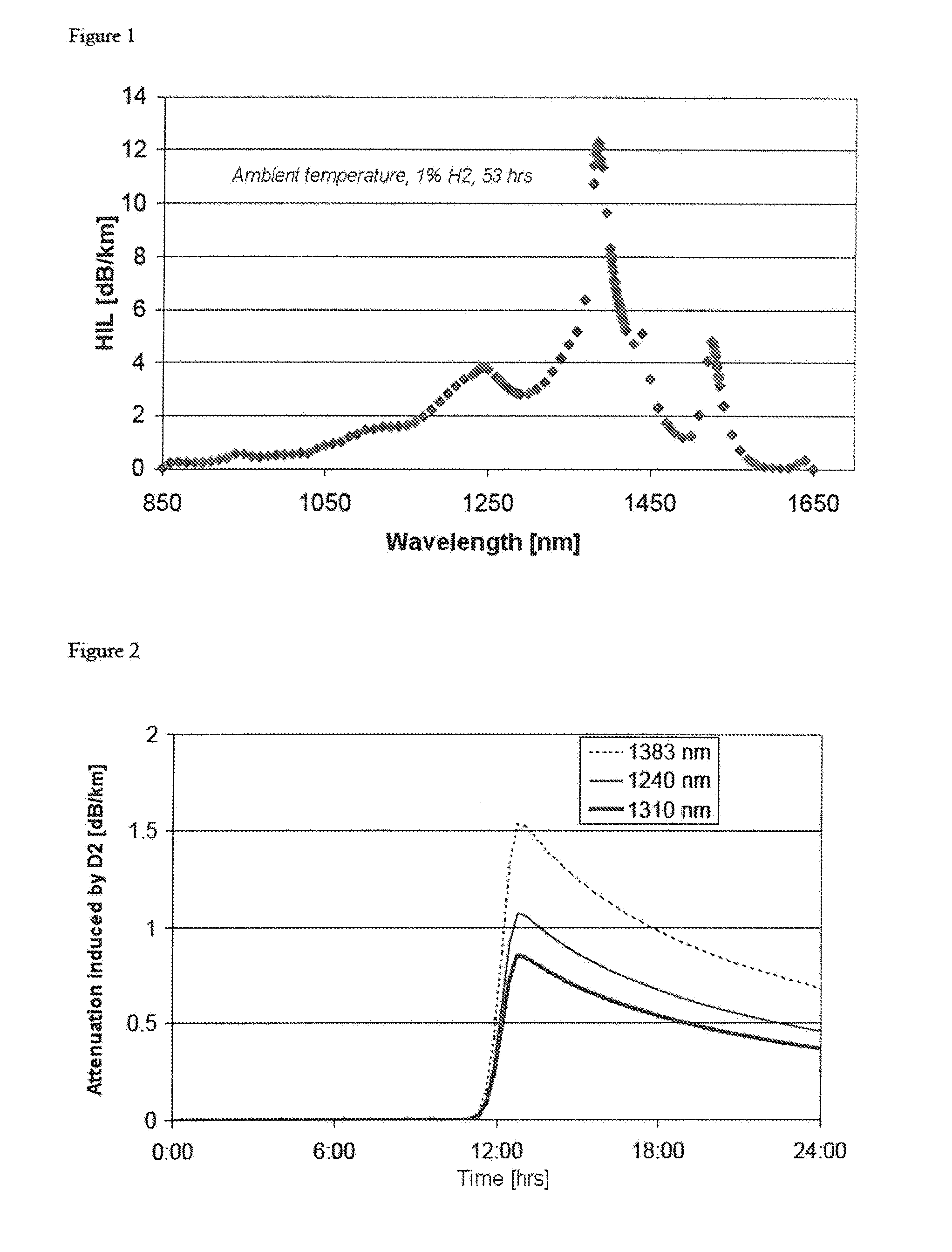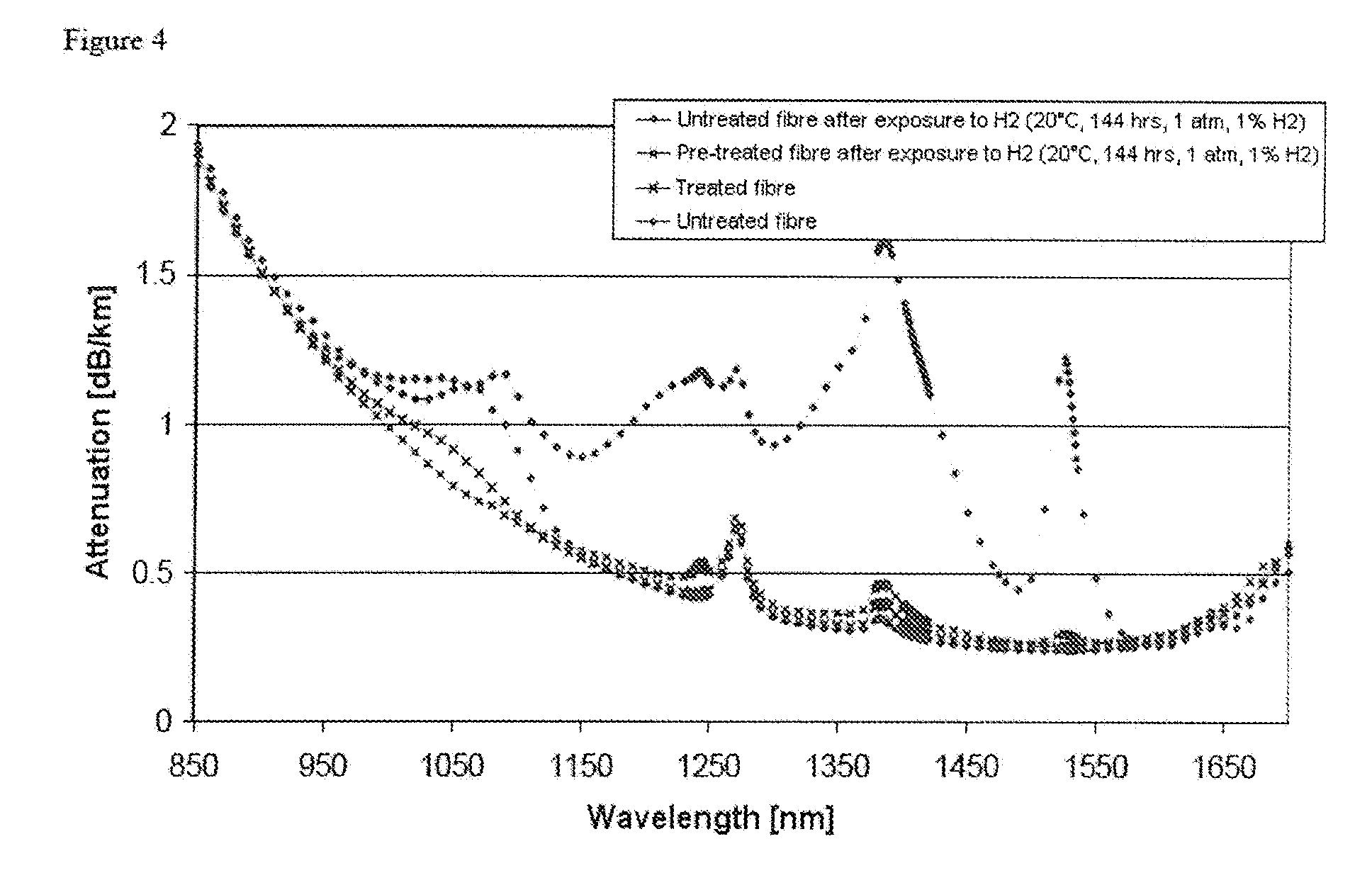Deuterium treatment method for optical fibres
a deuterium treatment and optical fibre technology, applied in the field of optical fibres, can solve the problems of rendering the fibre insensitive to future hydrogen exposure, and achieve the effect of reducing losses
- Summary
- Abstract
- Description
- Claims
- Application Information
AI Technical Summary
Benefits of technology
Problems solved by technology
Method used
Image
Examples
Embodiment Construction
[0051]The treatment according to the invention can be applied to any type of fibre that behaves as defined above in hydrogen or deuterium, i.e. any type of fibre that does not contain germanium in the core. Such fibres can be pure silica core fibres (PSCFs), particularly suitable for optical systems located in radioactive environments. For example, the fibre can be of the type described in document EP 1 876 150 A. The invention also applies to fibres substantially without germanium in the core but that could contain other dopants, such as fluorine for example, in limited concentrations (less than 2 wt % for example).
[0052]As explained above, fibres without germanium in the core generally have a significant attenuation increment when they are placed in a hydrogen-rich atmosphere, typically with a partial pressure of hydrogen greater than or equal to 0.0001 atm. Radioactive environments are likely to have such an atmosphere.
[0053]The present invention proposes deuterium treatment of t...
PUM
| Property | Measurement | Unit |
|---|---|---|
| Temperature | aaaaa | aaaaa |
| Time | aaaaa | aaaaa |
| Time | aaaaa | aaaaa |
Abstract
Description
Claims
Application Information
 Login to View More
Login to View More - R&D
- Intellectual Property
- Life Sciences
- Materials
- Tech Scout
- Unparalleled Data Quality
- Higher Quality Content
- 60% Fewer Hallucinations
Browse by: Latest US Patents, China's latest patents, Technical Efficacy Thesaurus, Application Domain, Technology Topic, Popular Technical Reports.
© 2025 PatSnap. All rights reserved.Legal|Privacy policy|Modern Slavery Act Transparency Statement|Sitemap|About US| Contact US: help@patsnap.com



